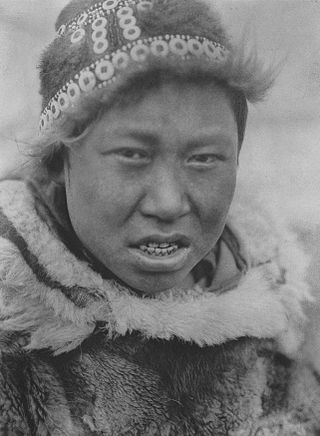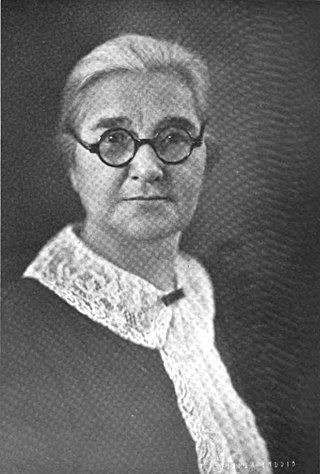Larry McNeil | |
|---|---|
| Born | Larry Tee Harbor Jackson McNeil May 12, 1955 |
| Nationality | Tlingit-Nisga'a [1] |
| Known for | Photography, printmaking |
| Website | http://www.larrymcneil.com/ |
Larry McNeil (born Larry Tee Harbor Jackson McNeil [2] ) is a Native American photographer and printmaker. His photographs range on subjects and formats from realist portraits to tribal elders, from abstract cityscapes to electronic manipulations of tribal environments. His images are considered personally meaningful as they are representative of tribal realities and highlight the sensitivity behind the representation of Native Americans. [3]
Larry McNeil was born in Juneau, Alaska on May 12, 1955, into the Killer Whale House, Keet Hit, of the Northern Tlingit and was raised in both Juneau and Anchorage, Alaska. This made him a member of both the Tlingit and Nisga'a tribes. [4] He received his education from Brooks Institute School of Photographic Art and Science in Santa Barbara, California.
Larry McNeil describes himself as a product of both the traditional Tlingit culture and mainstream North America, with an emphasis on the Tlingit aspect. [5] In 1983, he worked with Alaska Native Foundation and produced Yupik Eskimo women weaving distinctive grass baskets. Later in 1986, he created seventeen portraits of tribal clan leaders in Northwest Arctic School District. In the same year, he was nominated as vice-president of the Native Indian/Inuit Photographers Association; he was also an instructor at the Institute of American Indian Arts as well as a commercial photographer. [3]
McNeil is currently an associate professor of photography at Boise State University. [4]
McNeil's sequence of photographs titled Fly By Night Mythology was well received. Emeritus Professor of American Literature, Mick Gidley, commented that the sequence "represents both recovery of history and, photographically, creation through revision" in a manner that "frames in photographs - both old and new - a national myth that incorporates the first Americans". [6] The sequence features a series of archive photos from McNeil's family history of growing up in Anglo-American culture juxtaposed with images of his Tlingit tribe members, as a representation of his own mixed ancestry and of the relationship between the two histories. [6] The early photographs in the work are also a symbolic representation of traditional Tlingit stories, featuring examples of "Raven the Changeling and Trickster playing the protagonist", along with representations of interactions between Chief Pontiac and George Washington. [2]

The Tlingit or Lingít are Indigenous peoples of the Pacific Northwest Coast of North America and constitute two of the 231 federally recognized Tribes of Alaska. Most Tlingit are Alaska Natives; however, some are First Nations in Canada.

The Yupik are a group of Indigenous or Aboriginal peoples of western, southwestern, and southcentral Alaska and the Russian Far East. They are related to the Inuit and Iñupiat. Yupik peoples include the following:

Totem poles are monumental carvings found in western Canada and the northwestern United States. They are a type of Northwest Coast art, consisting of poles, posts or pillars, carved with symbols or figures. They are usually made from large trees, mostly western red cedar, by First Nations and Indigenous peoples of the Pacific Northwest Coast including northern Northwest Coast Haida, Tlingit, and Tsimshian communities in Southeast Alaska and British Columbia, Kwakwaka'wakw and Nuu-chah-nulth communities in southern British Columbia, and the Coast Salish communities in Washington and British Columbia.

Edward Sheriff Curtis was an American photographer and ethnologist whose work focused on the American West and on Native American people. Sometimes referred to as the "Shadow Catcher", Curtis traveled the United States to document and record the dwindling ways of life of various native tribes through photographs and audio recordings.

The Eiteljorg Museum of American Indians and Western Art is an art museum in downtown Indianapolis, Indiana, United States. The Eiteljorg houses an extensive collection of visual arts by indigenous peoples of the Americas as well as Western American paintings and sculptures collected by businessman and philanthropist Harrison Eiteljorg (1903–1997). The museum houses one of the finest collections of Native contemporary art in the world.

Nora Marks Keixwnéi Dauenhauer was a Tlingit poet, short-story writer, and Tlingit language scholar from Alaska. She won an American Book Award for Russians in Tlingit America: The Battles of Sitka, 1802 And 1804. Nora was Alaska State Writer Laureate from 2012 - 2014.

Elizabeth Peratrovich was an American civil rights activist, Grand President of the Alaska Native Sisterhood, and a Tlingit who worked for equality on behalf of Alaska Natives. In the 1940s, her advocacy was credited as being instrumental in the passing of Alaska's Anti-Discrimination Act of 1945, the first state or territorial anti-discrimination law enacted in the United States.
Seiki Kayamori was a Japanese photographer who lived in Yakutat, Alaska, before World War II. His photographs captured the village's residents, mostly Tlingit Indians, at a time when the fish canning industry and other outside influences were beginning to change or eclipse traditional ways of life.

Taku Harbor is a sheltered bay located about 22 miles (35 km) southeast of central Juneau, Alaska, United States. With proximity to the Taku River, the harbor served as important center of trade for the Taku people, as a Hudson's Bay Company trading post, and salmon cannery. Currently nearly all of the harbor is part of the Taku Harbor State Marine Park. There are no current year-round residents.

Horace Poolaw (1906–1984) was a Kiowa photographer from Mountain View, Oklahoma.

Celebration is a biennial Tlingit, Haida and Tsimshian cultural event held during the first week of June in Juneau, Alaska, United States that occurs once every two years.

Photography by indigenous peoples of the Americas is an art form that began in the late 19th century and has expanded in the 21st century, including digital photography, underwater photography, and a wide range of alternative processes. Indigenous peoples of the Americas have used photography as a means of expressing their lives and communities from their own perspectives. Native photography stands in contrast to the ubiquitous photography of indigenous peoples by non-natives, which has often been criticized as being staged, exoticized, and romanticized.
Southeast Alaska Regional Health Consortium (SEARHC) is a non-profit medical, dental, vision and mental health organization serving the health interests of the residents of Southeast Alaska.

Nicholas Galanin is a Sitka Tribe of Alaska multi-disciplinary artist and musician of Tlingit and Unangax̂ descent. His work often explores a dialogue of change and identity between Native and non-Native communities.

Matilda Kinnon "Tillie"' Paul Tamaree was a Tlingit translator, civil rights advocate, educator, and Presbyterian church elder.

Rosita Kaaháni Worl is an American anthropologist and Alaska Native cultural, business and political leader. She is president of the Sealaska Heritage Institute, a Juneau-based nonprofit organization that preserves and advances the Tlingit, Haida and Tsimshian Native cultures of Southeast Alaska, and has held that position since 1997. She also served on the board of directors of the Sealaska regional Native corporation for 30 years, beginning in 1987, including as board vice president. The corporation, with more than 22,000 shareholders, founded the heritage institute and provides substantial funding.
Zoë Marieh Urness is a photographer of Alaskan Tlingit and Cherokee Native American heritage. She creates portraits of modern Indigenous cultures in traditional regalia and settings.
Case & Draper was a photographic studio partnership in Skagway, Alaska, between William Howard Case and Horace H. Draper. Their work included photographs of the Tlingit, portraits, scenery, and gold rush era images. Digital collections of their work are available at the Orbis Cascade Alliance and the Alaska State Library, which has images of their photographic tent as well as their dog team and sled in front of their store. From 1907 to 1914, the studio was known as Draper and Co.
The Douglas Indian Village was the winter village of the Taku Kwáan Tlingit. The village was on Douglas Island, now a part of Juneau, Alaska, United States. In the summer of 1962, while the residents were away at Fish Camp, the village was declared abandoned and set on fire to make way for the Douglas Harbor.
Da-ka-xeen Mehner is a Tlingit/Nisga'a American visual artist whose work includes photography and multimedia installations that incorporate video, sculpture and sound.